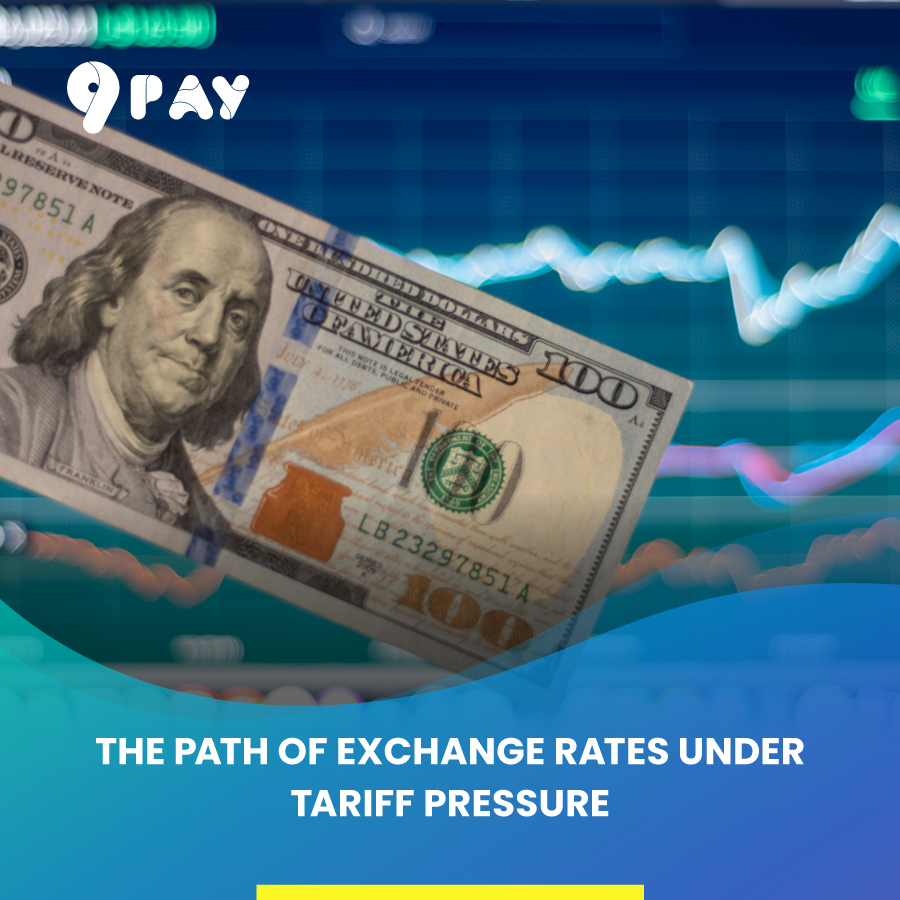The path of exchange rates under tariff pressure
Forecasting short-term exchange rate trends is challenging, but a key issue persists: the Vietnamese dong remains under pressure as the U.S. dollar strengthens, driven by concerns over potential tariff impositions.

Will the Dollar Resume Its Upward Trend?
Vietnam’s foreign exchange market has witnessed notable fluctuations, closely tied to macroeconomic movements in the U.S. The U.S. Dollar Index (DXY) fell from its peak of 110 in late January to around 103, marking a sharp 6.5% drop within a month. However, in the past two weeks, it has gradually climbed back to 104. As of March 31, the index stood at approximately 103.8, still relatively high compared to its recent low of 103.2.
The dollar’s rebound has been largely driven by signals from the U.S. Federal Reserve (Fed) indicating no rush to cut interest rates further. Earlier this year, the greenback was under pressure due to concerns over the negative impact of U.S. trade policies on economic growth. However, recent developments suggest a recovery in the currency.
These changes have sparked speculation that the calm in exchange rates may soon end as the U.S. dollar regains strength. Nonetheless, the future of the greenback remains a subject of debate among macroeconomic analysts.
According to Abel Lim, Head of Wealth Management Advisory and Strategy at UOB (Singapore), recent data supports a short-term increase in the U.S. dollar, though the outlook remains "uncertain."
"It is unclear because ‘Trump-linked inflation’ remains high, which means interest rates will stay elevated, keeping the dollar strong. However, if economic growth slows, central banks in both China and the U.S. may be forced to intervene," Abel noted.
In his latest forecast, Abel Lim expects the Fed to cut interest rates by only 25 basis points this year, down from the previously anticipated two cuts. However, global uncertainty persists, particularly as China continues its efforts to bolster economic growth.
Another critical factor is the looming U.S. countervailing tariffs, set to take effect in April. President Donald Trump has made several adjustments to his tariff strategy, initially proposing widespread tariffs on all countries before signaling potential reductions in the scale of the plan.
These developments add short-term pressure on the Vietnamese đồng. Last week, Standard Chartered Bank revised its mid-year exchange rate forecast to VND 26,000 per USD (previously VND 25,450) and its year-end forecast to VND 25,700 per USD (up from VND 25,000).
Maintaining Growth to Stabilize Exchange Rates
According to UOB’s assessment, the Vietnamese đồng hit a record low of approximately VND 25,600 per USD in early March after the State Bank of Vietnam (SBV) raised its selling price for the U.S. dollar to VND 25,450, up from VND 25,698. This marked the first adjustment since October last year. Despite fluctuations in global markets, the exchange rate has remained relatively stable over recent months.
The SBV later increased its dollar selling price to a new record high of VND 26,000 per USD, marking a 2.1% rise since early February 2025. This move comes amid unpredictable market conditions, including surging gold prices and growing concerns over global trade policies.
These actions suggest that the SBV aims to create greater flexibility in foreign exchange management while maintaining overall stability rather than imposing a fixed rate. The central bank appears to accept controlled fluctuations within a predetermined range.
Encouragingly, by the end of last week, the market exchange rate remained relatively stable. At commercial banks, the selling price hovered around VND 25,720 per USD, even slightly lower than earlier in the week.
According to Maybank Securities, as of March 21, the USD/VND exchange rate had only risen by 0.5-0.8% since the start of the quarter, significantly lower than the fluctuations observed between 2022 and 2024. This indicates that despite market pressures, the exchange rate remains under control.
The U.S. tariff policy is a key factor influencing exchange rates. In response, the Vietnamese government has begun considering reducing import duties on certain goods.
"Vietnam’s short-term economic outlook requires caution as we await further updates on U.S. trade policy, given Vietnam’s substantial trade surplus with the U.S. Additionally, Vietnam has expressed willingness to increase imports of American agricultural products and other goods," noted Tim Leelahaphan, Senior Economist for Thailand and Vietnam at Standard Chartered Bank.
Overall, current exchange rate policies require a more comprehensive approach beyond traditional foreign exchange and monetary tools. The World Bank’s March economic report on Vietnam highlights that monetary policy faces "limited room" for further interest rate cuts if the U.S. dollar continues to strengthen and exert pressure on the đồng. Conversely, Vietnam’s domestic growth prospects and the SBV’s commitment to exchange rate stability will serve as crucial buffers against depreciation pressures on the local currency.
Source: thesaigontimes








